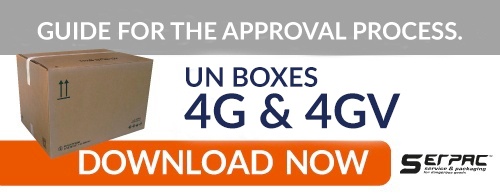Regulations you need to know if you want to transport dangerous goods

The shipment of dangerous goods can happen in different ways: depending on the destination, you must opt for transport by road, rail, sea or air.
Whatever the selected mode, you must first comply with the regulations. In fact, transporting dangerous goods is a highly regulated activity: each shipping method corresponds to a corresponding regulation. There are five ways to transport dangerous goods, and these are updated every year or every two years (depending on the case):
- ADR
- RID
- ADN
- IMDG
- ICAO/IATA
All 5 have precise criteria with different variations: from the choice and positioning of the labels, to the certifications of the employees, and even the procedure to be followed in emergencies.
The essential thing is to apply a sign that is clearly visible and shows the danger of the packed material. For this purpose, labels, marks, plaques and danger panels need to be purchased.
For example, when transporting by road, panels must be present on the front and rear of the vehicle, except in specific circumstances. It may happen that panels show some numbers: on the top part, the type of danger is indicated, the bottom shows the goods being transported according to UN references.
Labels work quite similarly and are more immediate than numeric panels, as they are pictograms. It is possible to match several labels to the same UN number.
ADR
This is specific to the transport of dangerous goods by road: in this case, by truck or lorry. The vehicle must carry the correct equipment in compliance with its corresponding regulations, such as:
-
Fire extinguishing equipment
-
Self-supporting warning signs
The provisions to be respected also apply to crew members, who must have adequate equipment for their personal safety, such as protective gloves and eye masks.
RID
Transporting dangerous goods can be done through the use of railway wagons. When shipments concern railway, reference is made to another type of international agreement, i.e. RID. This regulation specifies, for example, the dangerous goods which can only be transported on freight trains, the disposition of wagons and the permitted maneuvers that vary depending on the dangerousness of the goods.
ADN
This type of contract was proposed in Geneva, in the year 2000, and then came into force on February 29th 2008. ADN regulates the transport of dangerous goods by inland waterway. This document aims to establish in detail various safety parameters, such as which hazardous substances can be loaded, shipbuilding parameters, training experts, etc.
IMDG
This is aimed at regulating the movement of dangerous goods by sea. It consists of a set of international rules made to guarantee the safe maritime transport of dangerous materials. Special reference is made to the division of incompatible substances. The recommendations go into detail on each individual substance and define the correct packaging, labeling, stowage, and any steps to be carried out in the event of an emergency.
ICAO/IATA
These two acronyms indicate two different bodies, both belonging to the aviation sector. With I.C.A.O. we are talking about the International Civil Aviation Organization. On the other hand, I.A.T.A. stands for the International Air Transport Association, an international association of airlines. Both work together to maintain safe conditions when transporting dangerous goods by air. These guidelines are governed by Annex 18 to the Chicago Convention on International Civil Aviation, managed by ICAO.
